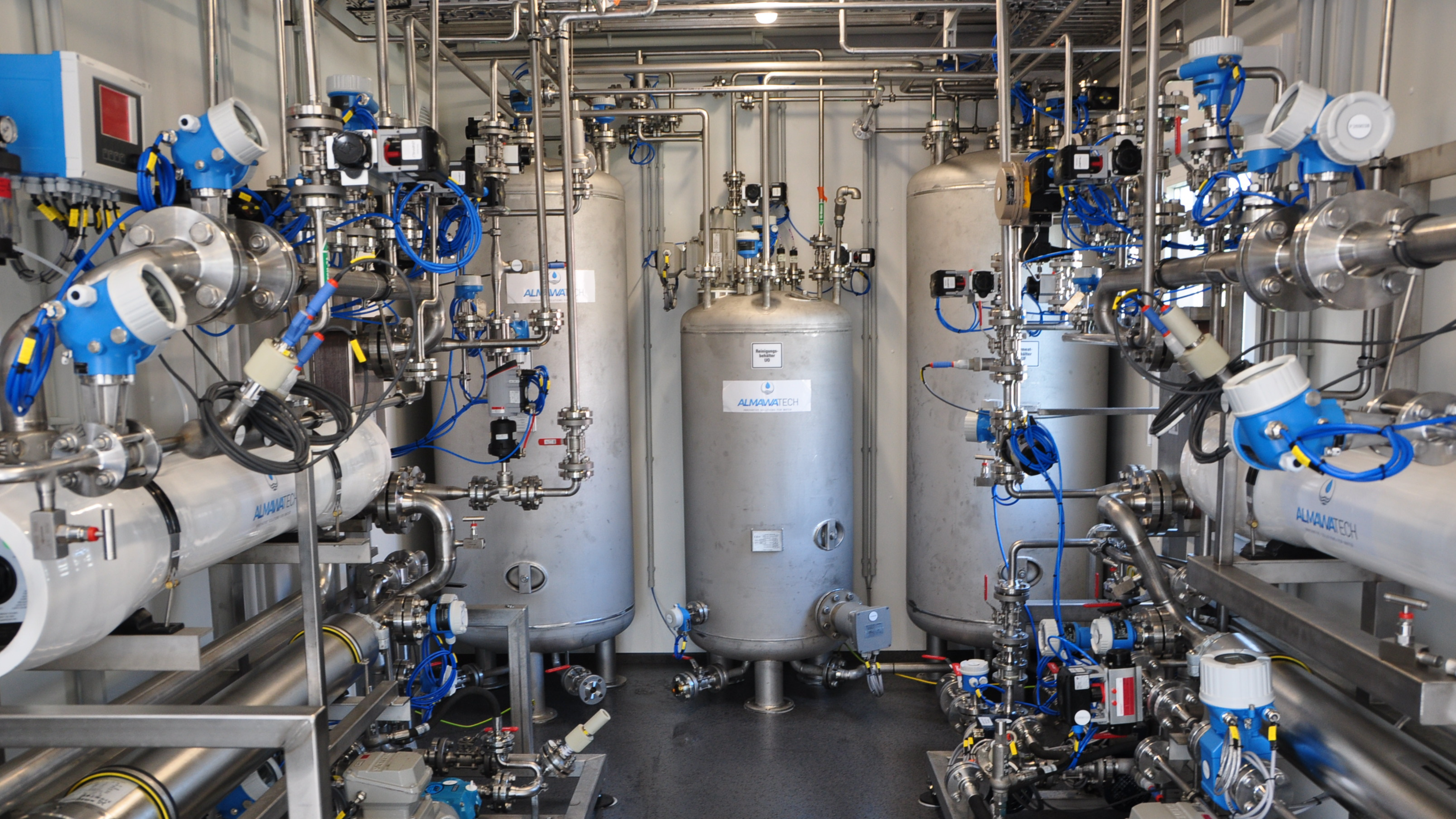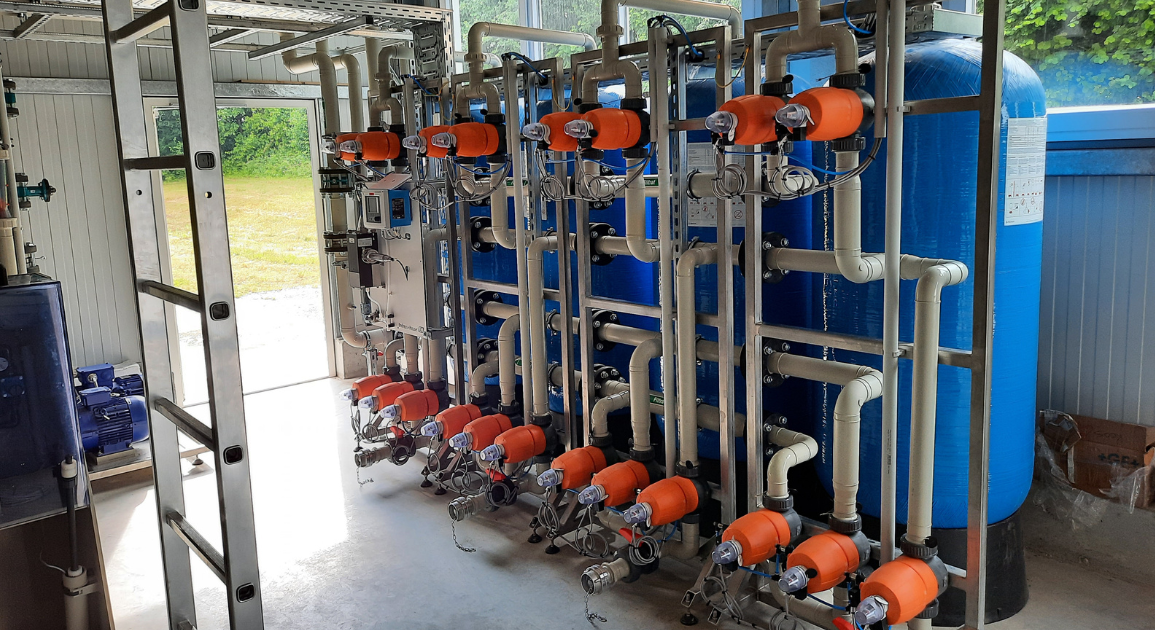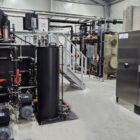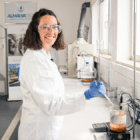Conductivity (also known as electrical conductivity or specific conductivity) is an essential parameter for assessing water quality in industrial water and wastewater treatment. It provides information about the concentration of dissolved salts and therefore about the ionic composition of the water. In practice, conductivity serves as an important indicator for the efficiency of water treatment processes, the purity of process water and compliance with legal requirements for wastewater disposal.
Table of contents
Definition and physical principles
Conductivity describes the ability of a medium to conduct electrical current. It is mainly determined by the presence of dissolved ions such as sodium (Na+), potassium (K+), chloride (Cl-) or sulphate (SO4²-). The unit of conductivity is Siemens per meter (S/m) or, in the water sector, microsiemens per centimetre (µS/cm).
Connection with the ion concentration:
The higher the ion concentration, the greater the conductivity.
Pure water has a very low conductivity (approx. 0.055 µS/cm at 25 °C).
Temperature dependence: The conductivity is strongly temperature-dependent. It increases with rising temperature, as the mobility of the ions is increased. Measuring devices therefore correct the conductivity to a reference temperature of 25 °C.
Conductivity measurement
Conductivity is measured using special conductivity sensors. These usually consist of two electrodes between which an alternating voltage is applied. The measured current is proportional to the conductivity of the liquid.
Measurement methods:
Contact measurement:
Electrodes come into direct contact with the medium.
Suitable for water with low to medium conductivity.
Inductive measurement:
No direct contact between sensor and medium.
Use in highly aggressive or heavily contaminated media.
Importance of conductivity in water technology
Conductivity is of central importance in various areas of water and wastewater technology:
1. process water treatment:
Quality control: In production, for example in the electronics or pharmaceutical industry, low conductivity is crucial for the quality of the process water.
Control of desalination: Reverse osmosisand ion exchanger systems continuously monitor conductivity to ensure the efficiency of salt retention.

Photo: One of our reverse osmosis systems with conductivity measurements in the permeate and concentrate, installed in the ALMA module technical room container
2. wastewater treatment:
Compliance with limit values: Conductivity is used to ensure that wastewater does not contain excessive amounts of dissolved salts that could cause environmental problems.
Process monitoring: Sudden changes in conductivity can indicate leaks or malfunctions in the system.
3. cooling systems:
Corrosion protection: High conductivity in cooling circuits can promote corrosion. Conductivity is therefore controlled by desalination and the use of inhibitors.
4. water recycling:
Conductivity is a key parameter for assessing the quality of recycled water and ensuring reusability.
Conductivity and water treatment technologies
Conductivity is closely linked to the effectiveness of various water treatment processes. Here are some examples:
1. ion exchange:
Ion exchange reduces conductivity by replacing dissolved ions with hydrogen (H+) and hydroxide ions (OH-), which combine to form water.
Used in the production of demineralized water (demineralized water).
2. reverse osmosis (RO):
RO membranes remove up to 99 % of dissolved salts and thus considerably reduce conductivity.
Typical permeate conductivity is below 20 µS/cm.
3. electrodeionization (EDI):
Combination of ion exchange and electrodialysis for the continuous removal of ions.
Produces ultra-pure water with a conductivity of less than 0.1 µS/cm.
4. distillation:
Removes dissolved salts by evaporation and condensation.
The result is water with very low conductivity.

Photo: Our ALMA ION ion exchanger system with upstream multi-layer filter and conductivity measurement
Challenges in controlling conductivity
1. soiling of the sensors:
Deposits or biofouling on the electrodes can impair the measuring accuracy.
Regular cleaning and calibration of the sensors is required.
2. influence of carbon dioxide (CO2):
Dissolved CO2 can increase conductivity, especially in softened water.
Degassing or pH control minimize this effect.
3. high salt concentrations:
Conventional measuring systems reach their limits at extremely high conductivities (> 200 mS/cm).
Inductive measuring methods offer a solution here.
Conclusion
Conductivity is an indispensable parameter in water and wastewater technology. It offers a simple and effective way of evaluating water quality and monitoring the efficiency of treatment processes. Accurate measurement and control of conductivity make a decisive contribution to the safety, efficiency and sustainability of industrial processes.
For further information on our products, please feel free to contact us at any time!








